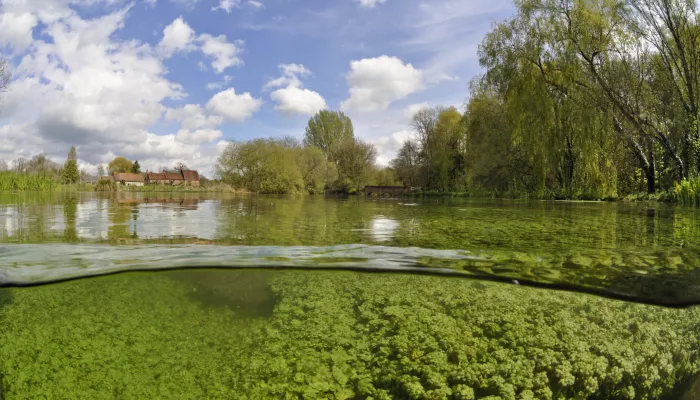
Osprey
A great way to get up close and personal with the magnificent osprey is via one of the many nestcams set-up in the places that it breeds: Scotland, Cumbria, Wales and the East Midlands.

From otters to freshwater shrimps, all animals are dependant on an abundant and reliable supply of clean water. Rivers sustain the natural environment, wildlife and people in equal measure.
Flowing water has an awesome power, over millennia it is able to carve and shape a landscape, determine its natural patterns and influence its history too. Life is uniquely dependant on water and for many species of plant and animal adaptation to a life cycle in or very near water is the main spring of their survival.
Rivers are fed by a much larger area of land known as a catchment, rain falls everywhere - from the high places to the low. River grow from springs, flushes, upwellings or from surface water. Rivers are dynamic and respond to conditions of geology, soil, chemistry and our own interventions.
Water chemistry changes in response to geology, rainfall and pollution. Theses influence the types of wildlife supported by watercourses. The nature of the river bed, banks and surrounding landscape use will also have a powerful affect of the animal and plant community supported by a river.
A river is part and parcel of its flood plain and its catchment. Flooding and drought can have catastrophic impacts on wildlife and people. An upland stream will violently carry away its tiny invertebrate population while flooded lowland small rivers could drown water vole burrows.
Rivers are very variable and no two sections of a river are the same. The tiniest of variations, a single boulder for instance creates endless variety. A flashy, unpredictable upland stream can have highly oxygenated waters, low in nutrients and therefore support unique and rare aquatic life such as stonefly and mayfly nymphs.
Lowland small rivers are slower. They are modified in many places and carry nutrient enriched waters which encourage plants such as reedmace and burr reed. Where these rivers run over sandstone or gravels, rock clinging wavy beds of water crowfoot shelter.
In hill country valleys the dynamic alternation between shallow riffles, actively eroding river cliffs and soft deposited silts can support brook lamprey and burrowing mayfly nymphs.
When exploring the rivers and brooks take care to move quietly. You might spot kingfishers, grey wagtails and dippers. These birds will work a length of stream exploring the pools, gravel shoals, tree-root hollows for beetle larvae and small fish fry.
In early summer look out for clouds of mayflies which emerge at the same time to lay eggs having lived for most of their life underwater as nymphs.
Later dragonflies hawk along the banks, whilst at night bats sweep across the surface feeding on moths. In autumn on large rivers Atlantic salmon can be glimpsed charging powerfully up the weir slopes, their smaller cousins the brown trout will be hustling up the fish passes put in to ease their way.
The pressures on our natural river systems are immense. Pollution from agricultural and road run-off bring sediment and harmful chemicals to push water quality down.
Over-abstraction can cause increased toxicity levels and lack of water for aquatic life. Reduction of tree cover leads to higher water temperatures and consequently low oxygen levels harmful to fish.
River conservation means taking a catchment approach, working with others and creating a broad range of projects and activities to create a river recovery network.